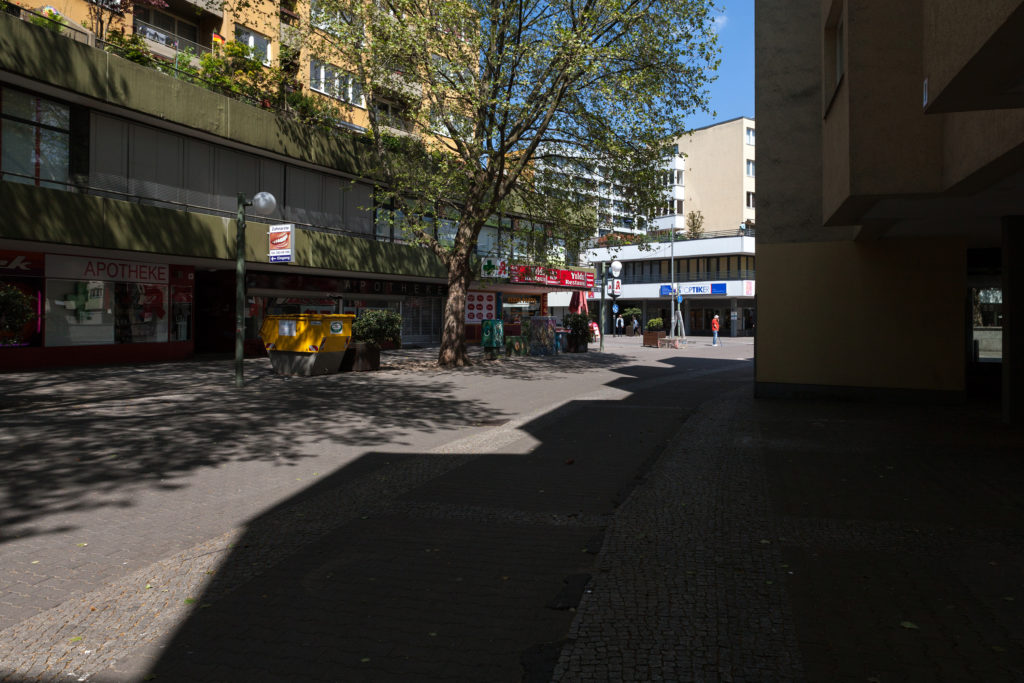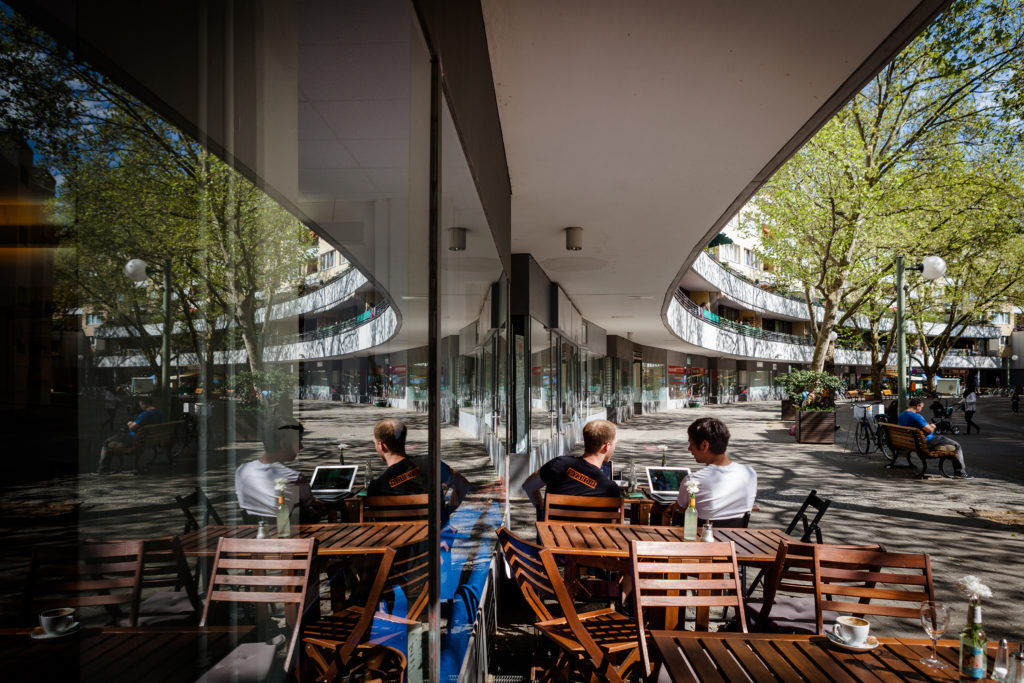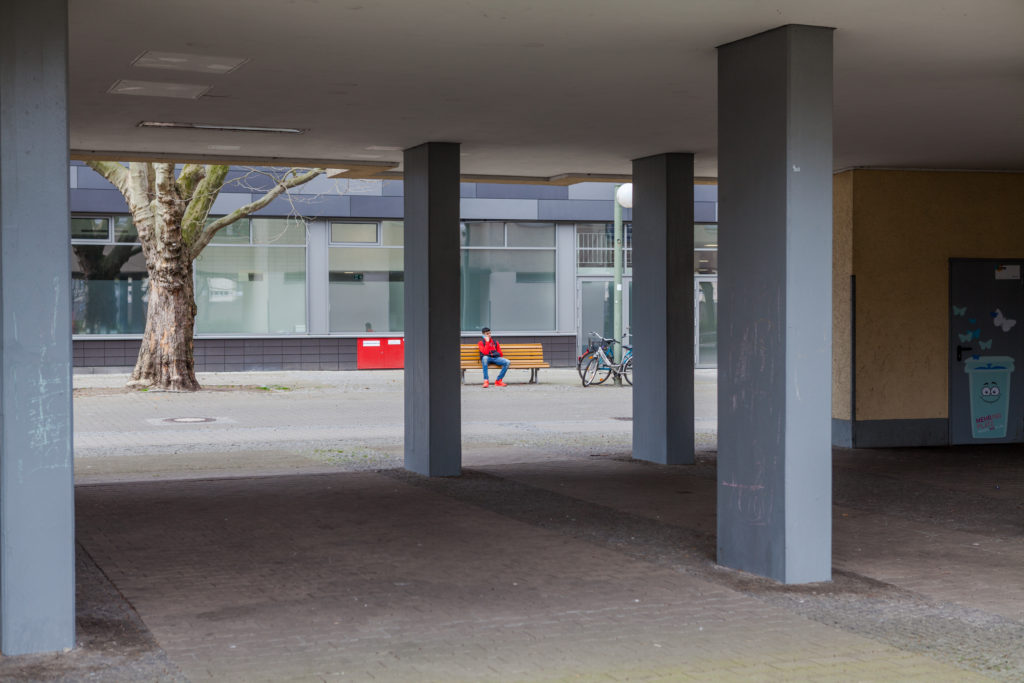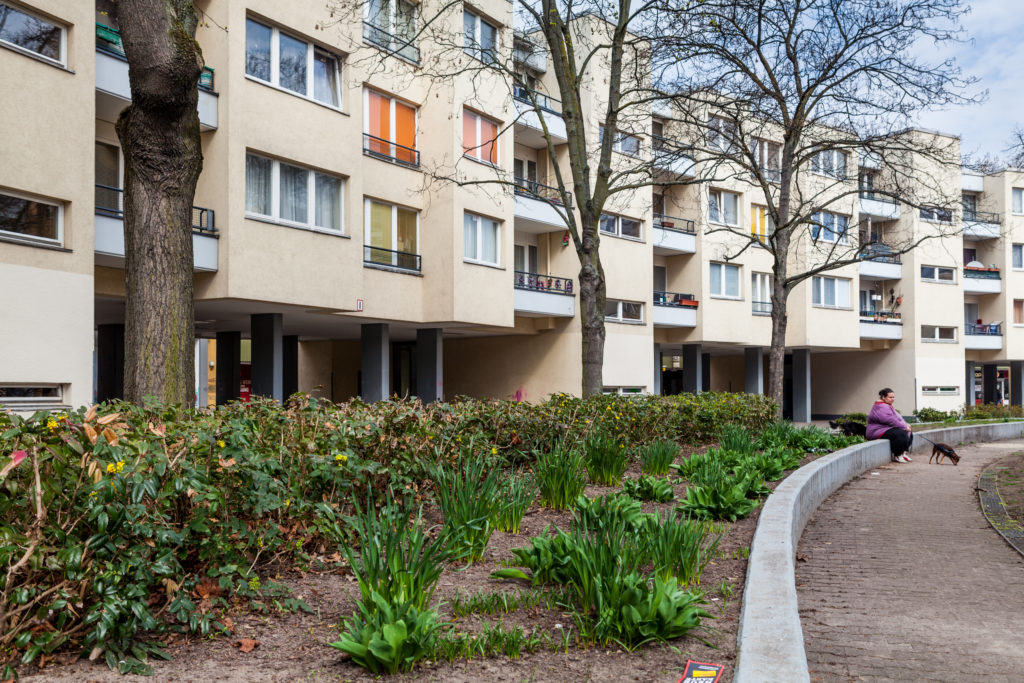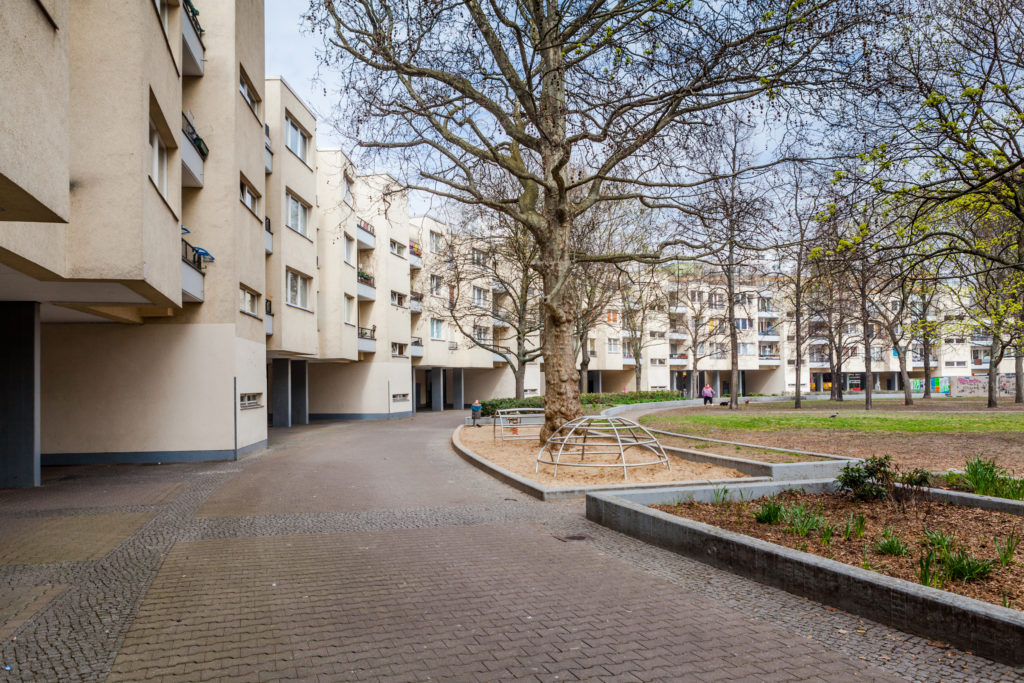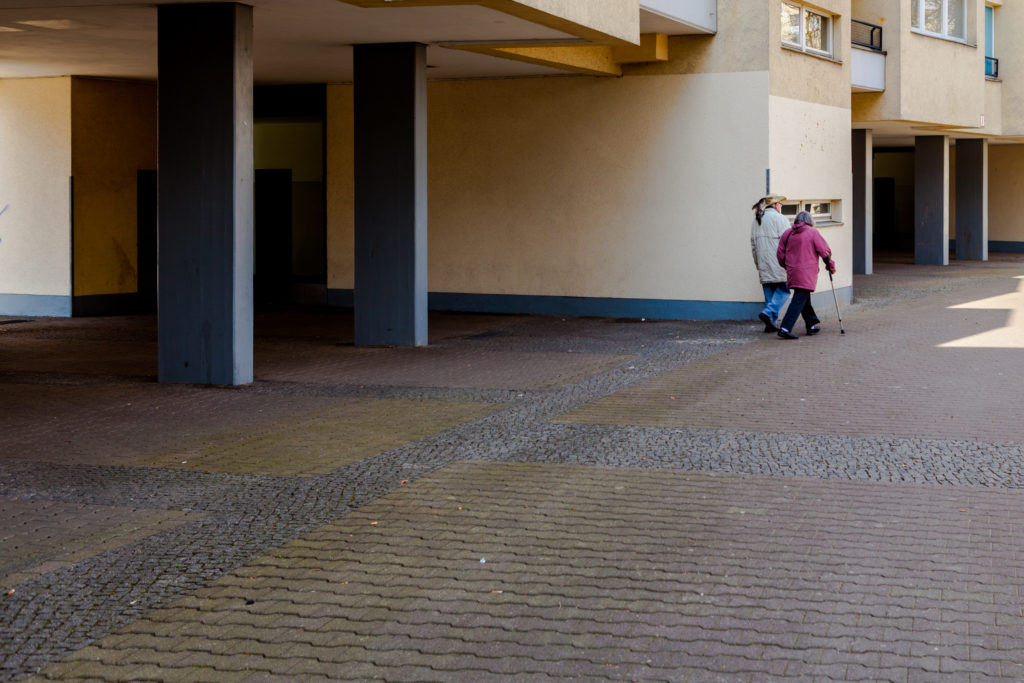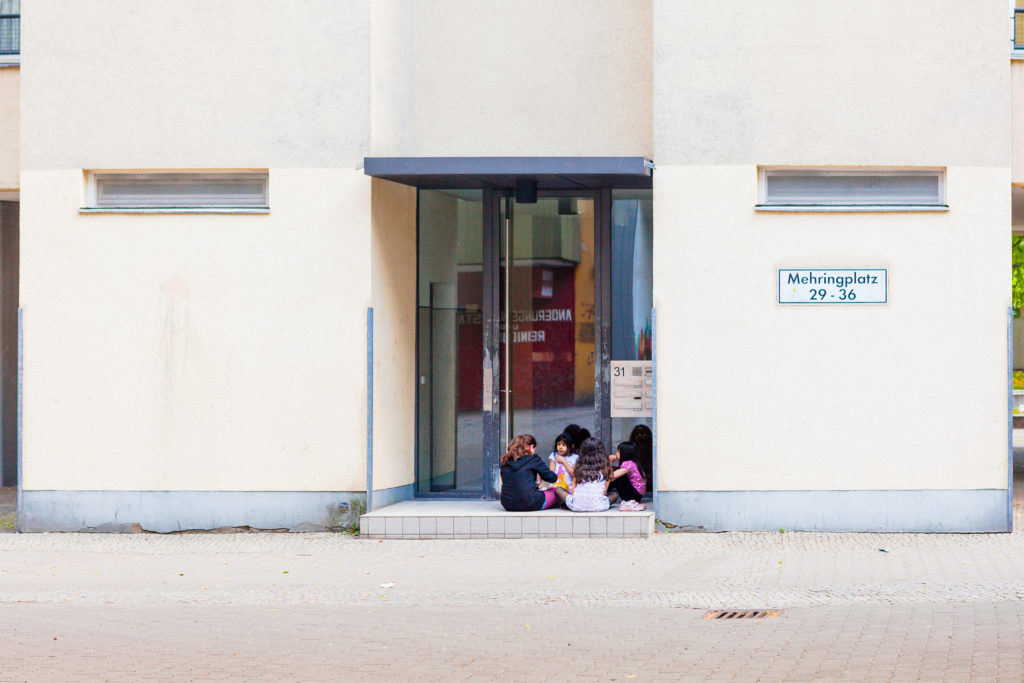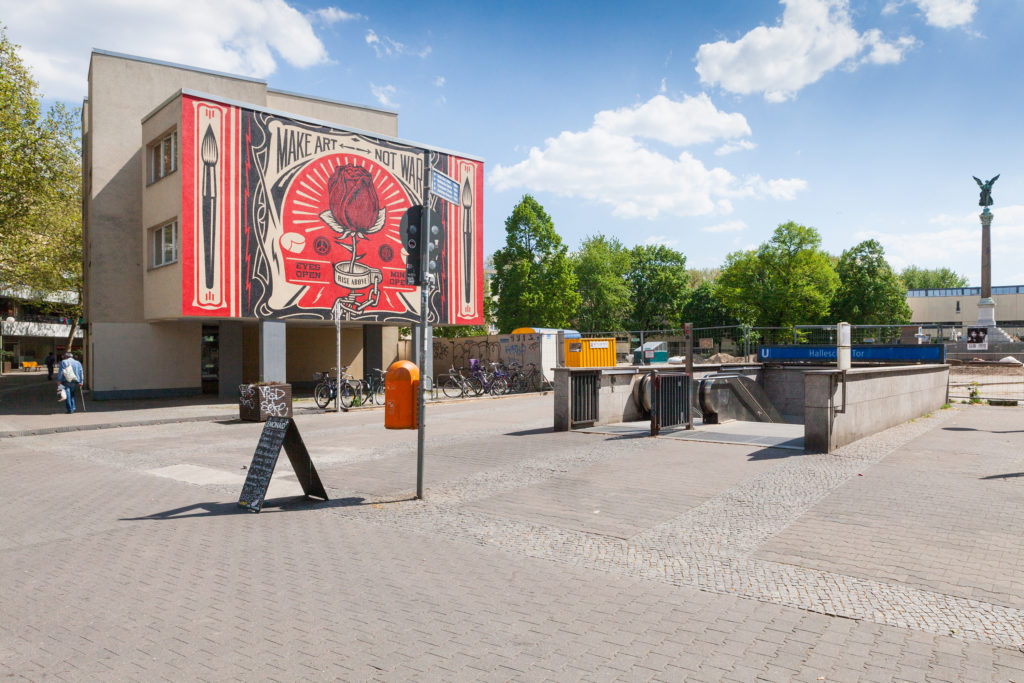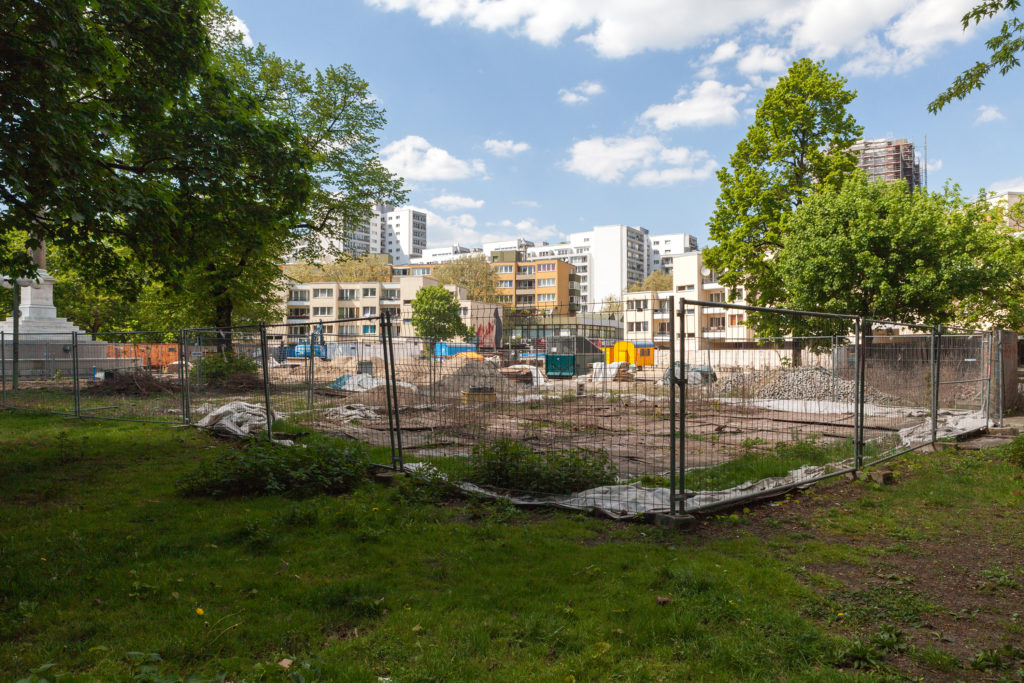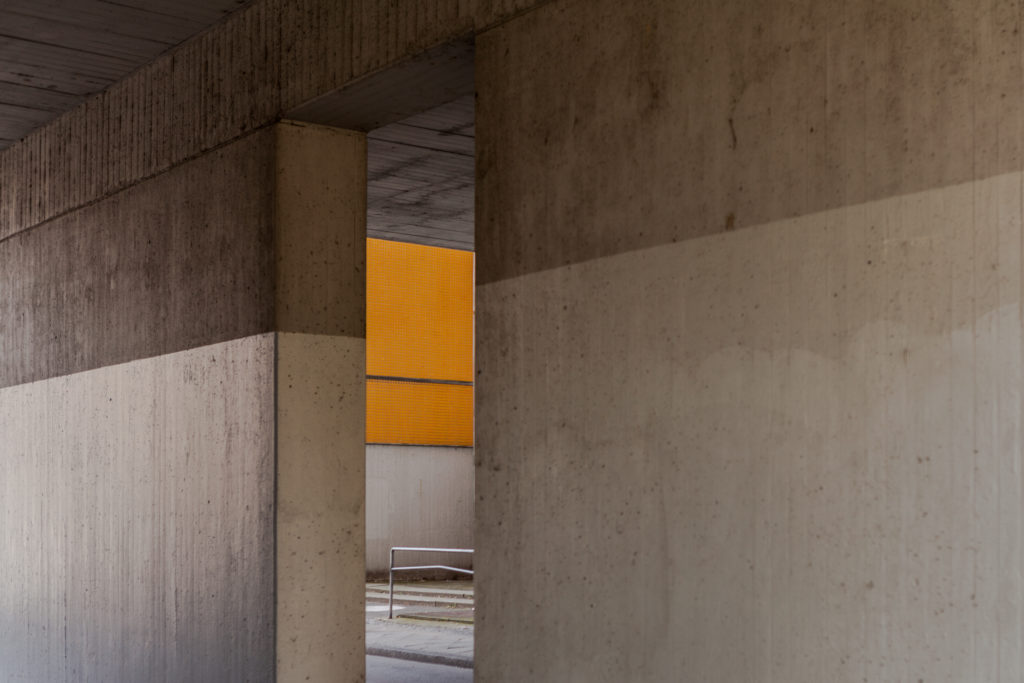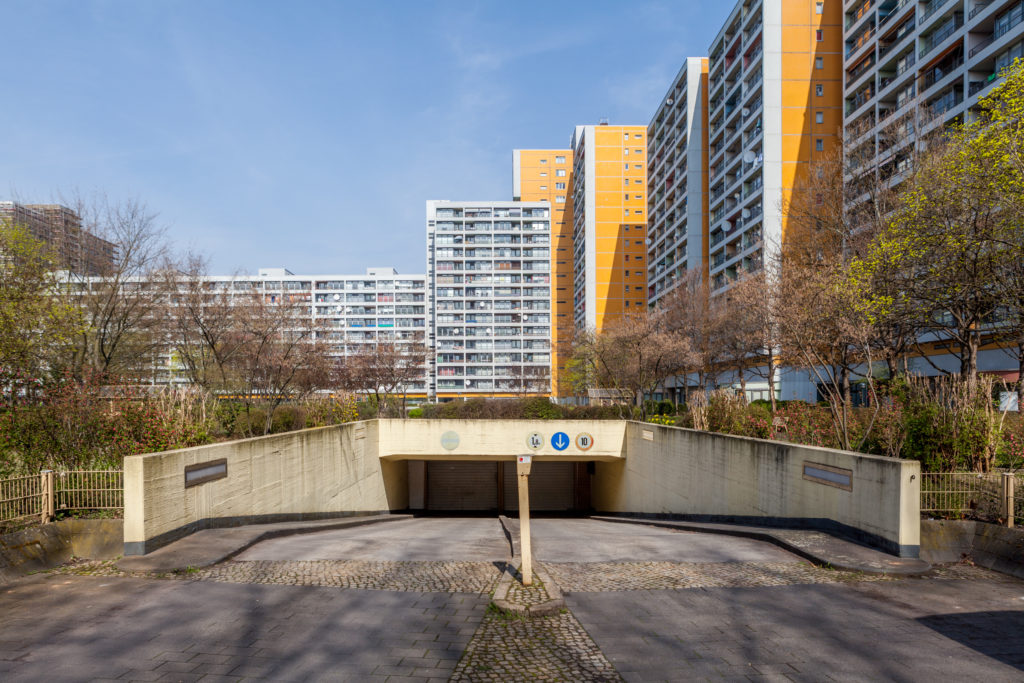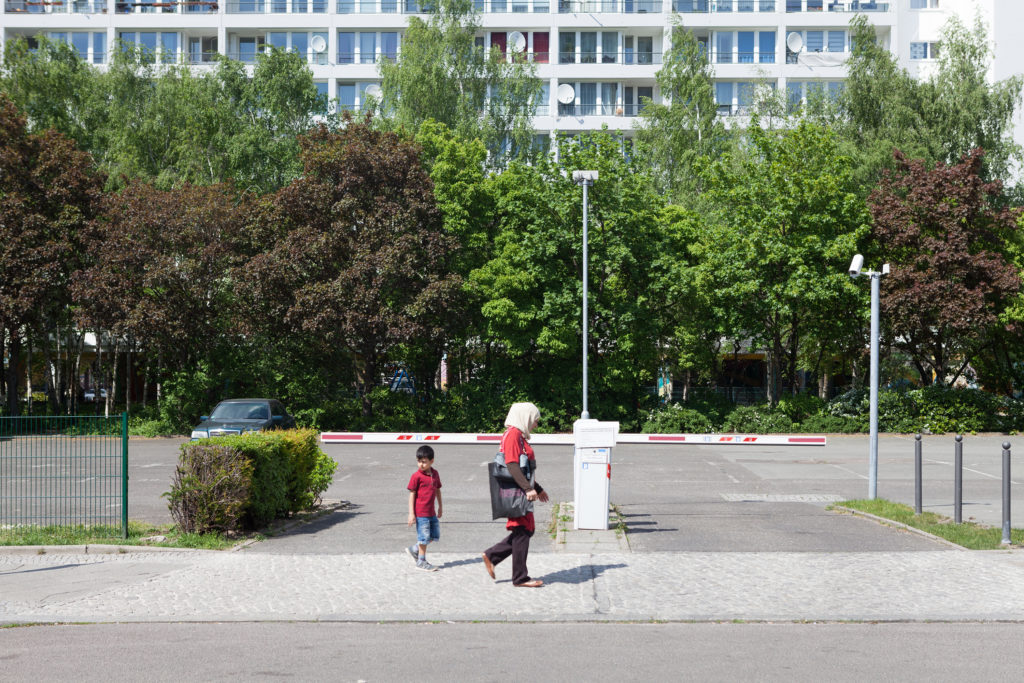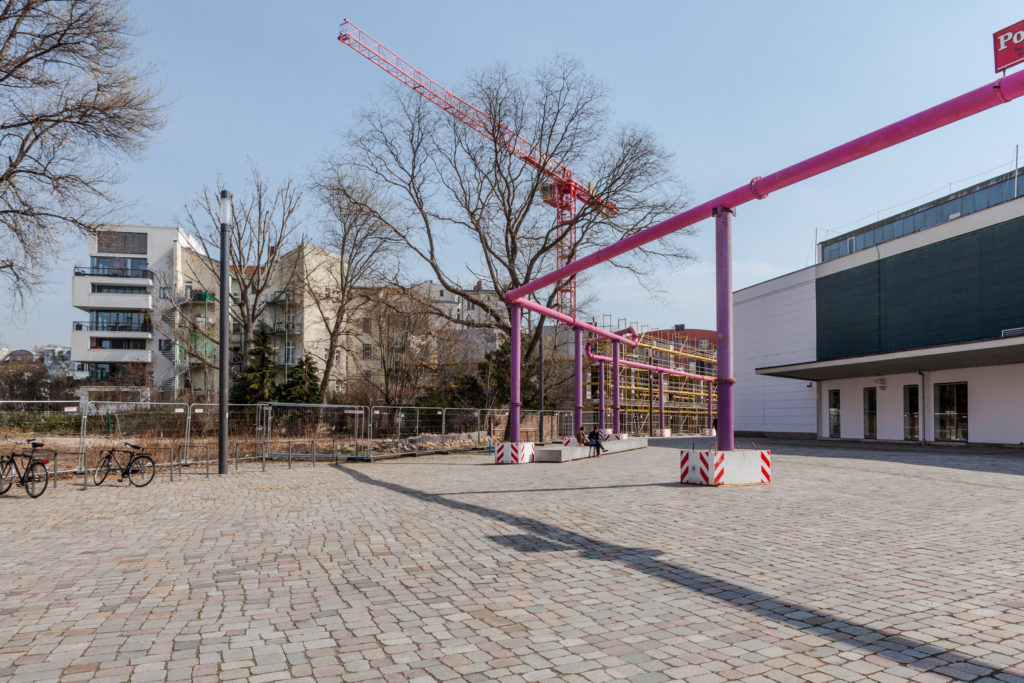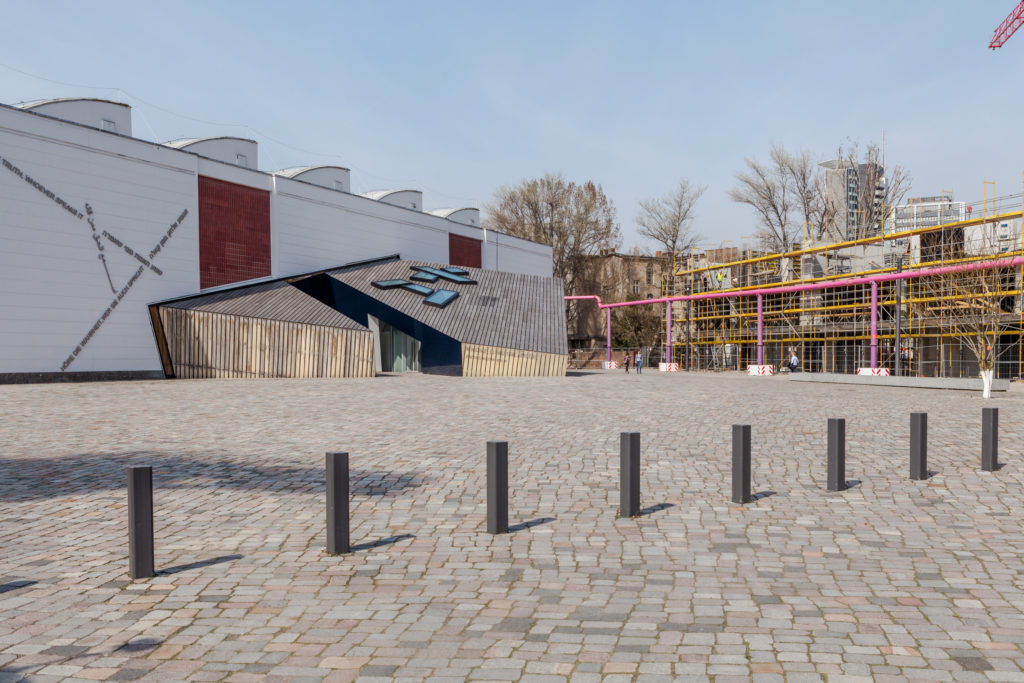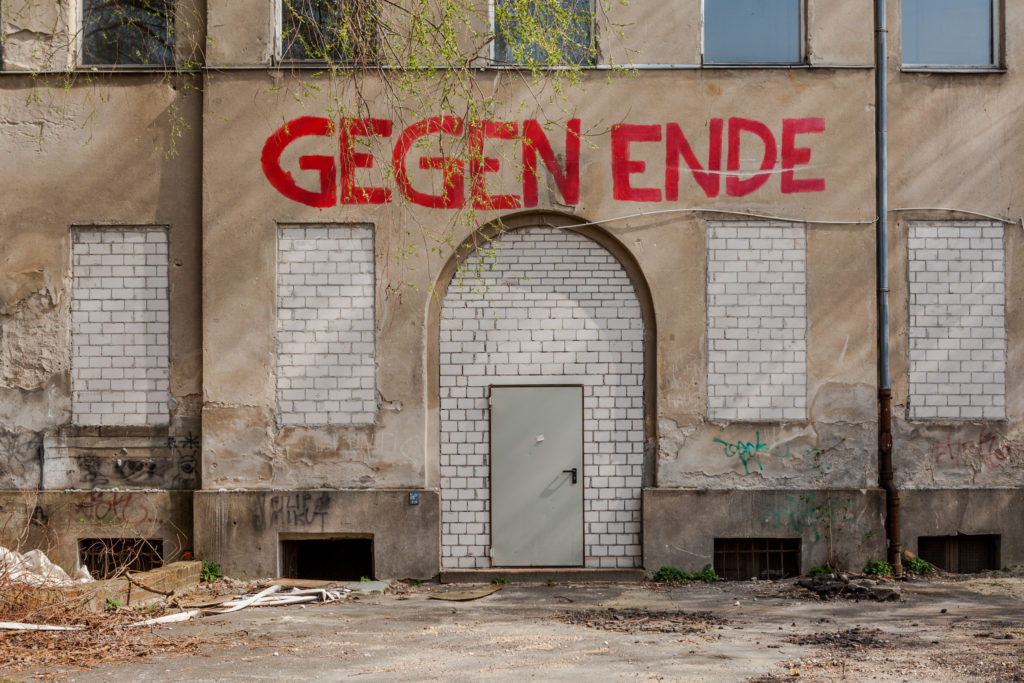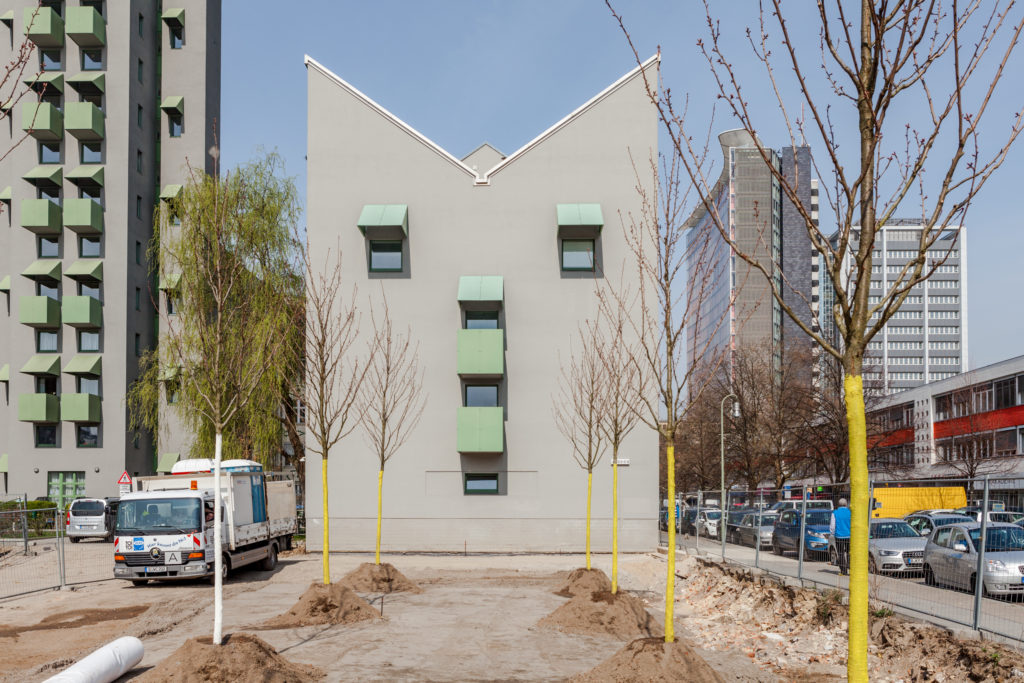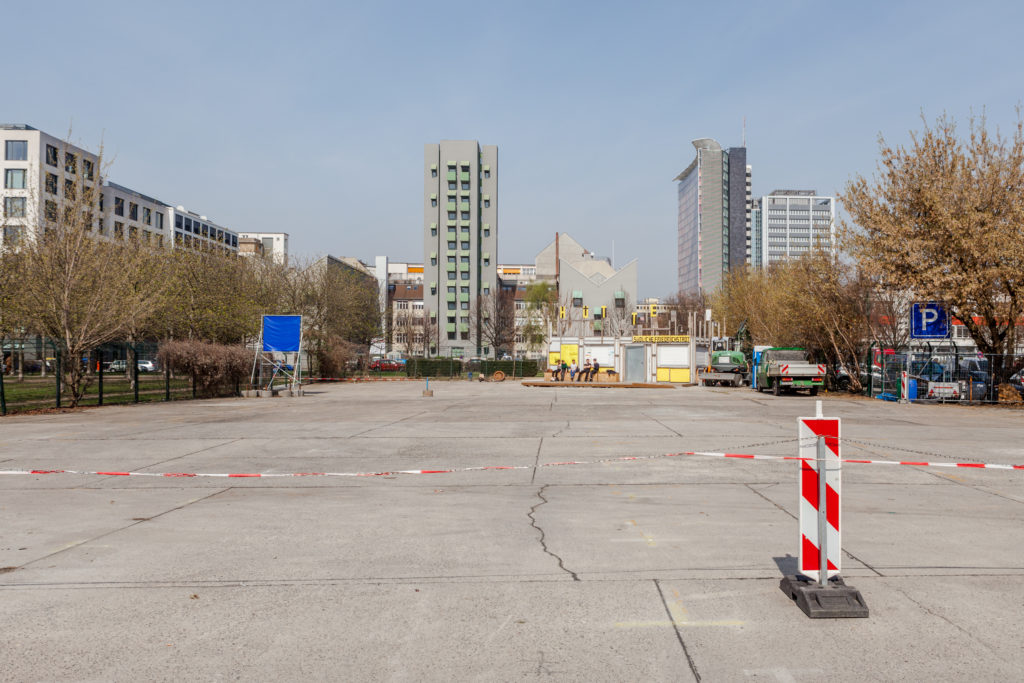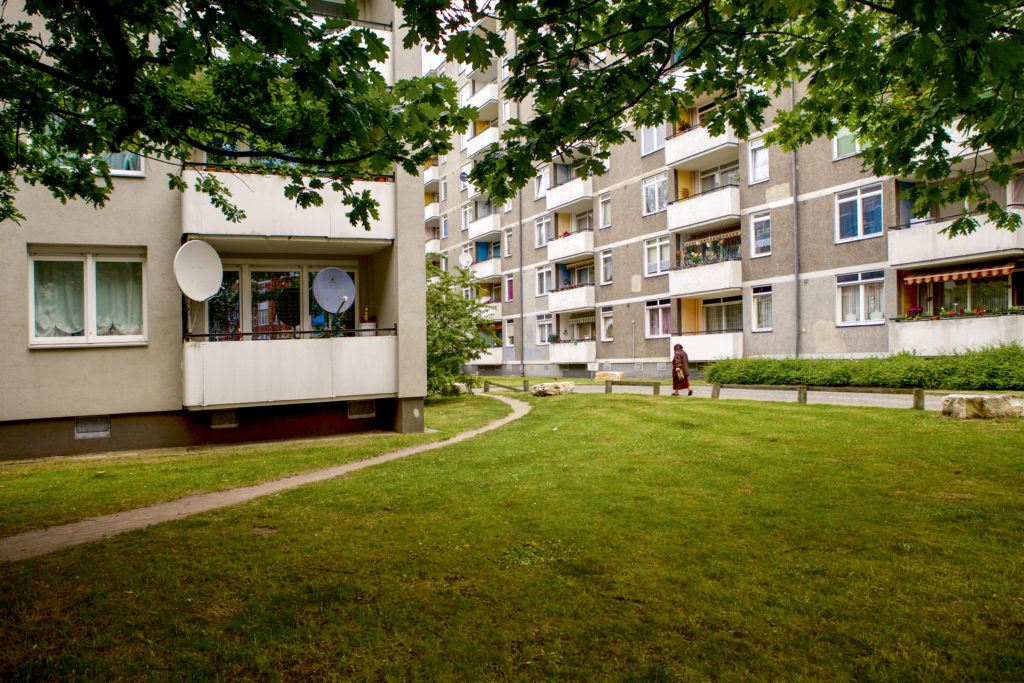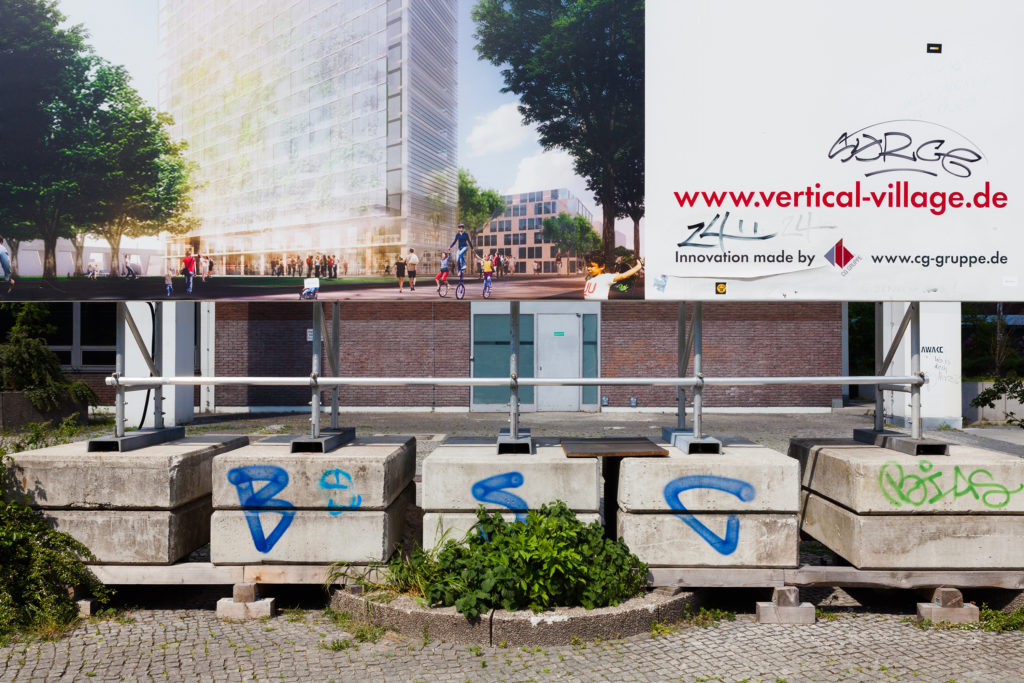Few places in Berlin are more emblematic than Mehringplatz of the concept of “periphery at the center”. Situated in a very central location of the city, only few hundred meters from the foundational nucleus of the city in the Fischerinsel, it is at the crossroads of two main axes of the city, the north- south oriented road Friedrichstrasse, and the east-west Ufer along the canal. Seen on the map, Mehringdamm is an imposing round, a visible hub where main roads converge, a target shaped structure declaring the intention to be a center. Nevertheless, it results in fact in a terminal cul-de-sac of the important boulevard, a residential settlement of social housing lying at the edge between Kreuzberg and Mitte, a relatively obscure and little frequented part of city with an atmosphere recalling rather that of a modernist dormitory suburb than a central location in a European capital. Notwithstanding, its unclassifiable mix of incongruent elements and landscapes results in a quintessential Berliner place, embodying all the contradictions and contaminations that make up this city’s identity.
